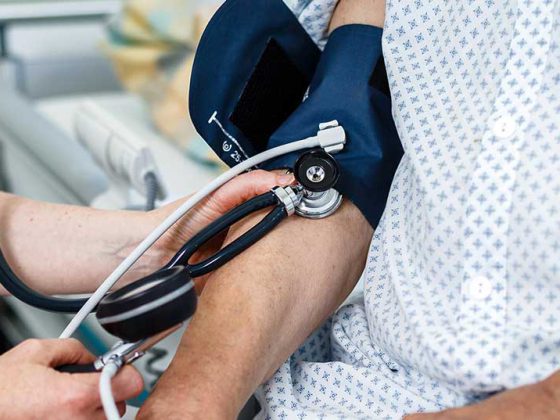Background: Multiple sclerosis (MS) is a chronic inflammatory disease of the central nervous system and, with a median age of onset of 30 years, the most common disabling disease in young adults in industrialized countries. The course of the disease can be highly variable and differs from patient to patient. There is limited ability to predict the future course of MS on an individual basis and to assess central nervous system damage. In addition to the clinical examination, magnetic resonance imaging (MRI) helps here. Reliable and readily available biomarkers to answer these questions do not exist and would therefore be of high relevance in the care of MS patients.
Neurofilaments are important components of the neuronal cytoskeleton and previous data suggest that the concentration of the so-called neurofilament light chain (NfL) in CSF correlates with the extent of neuronal damage in MS patients. However, determination of NfL concentration in cerebrospinal fluid (CSF) is not suitable for disease monitoring because this would require repeated lumbar punctures. For this reason, the group led by PD Dr. med. Jens Kuhle from the Neurological Clinic of the University Hospital Basel has developed a test to determine the NfL concentration in serum, with the advantage that only one blood sample is required for the determination.
In a previous study, the group has already shown that serum NfL levels were higher in patients with a precursor of MS, clinically isolated syndrome (CIS), than in healthy controls. Furthermore, higher serum NfL concentrations in these CIS patients were associated with higher lesion burden on MRI and higher disability [1]. Thus, the goal of further research is to evaluate whether serum NfL could be a suitable biomarker for MS patients, for example, in terms of neuronal damage, prognosis, or response to baseline immunomodulatory therapies.
Research question: The aim of the study presented here was to investigate the extent to which 1. the concentration of CSF NfL correlates with serum NfL in patients with relapsing-remitting MS (RRMS), 2. the serum NfL concentration of RRMS patients differs from healthy controls, and 3. Serum NfL concentration is associated with MRI findings of the brain (atrophy, number of lesions, etc.).
PATIENTS AND METHODS: NfL was measured in CSF and serum in 31 RRMS patients. After a median time of 3.6 years, serum NfL was again determined in 29 of these patients, and brain MRI was performed in 19 of these patients, 10 new RRMS patients, and 18 healthy controls. In addition, demographic data as well as relapses and current baseline immunomodulatory therapy were collected, and the Expanded Disability Status Scale (EDSS) was performed at baseline and follow-up to assess clinical disability level.
Results: The concentration of CSF and serum NfL were highly correlated in RRMS patients (r=0.62, p=0.0002). Serum NfL concentration was higher in RRMS patients than in healthy controls (p=0.004) and did not change from baseline to follow-up (p=0.56). Furthermore, the level of serum NfL concentration correlated with various MRI endpoints such as white matter brain lesion volume (r=0.68, p<0.0001), and T1 (r=0.40, p=0.034) and T2* relaxation time (r=0.49, p=0.007).
Authors’ conclusions: CSF and serum NfL concentrations were highly correlated in RRMS patients and were elevated compared with healthy controls. Furthermore, serum NfL concentrations correlated with conventional and recent MRI markers of disease severity.
Based on these results, the goal is to explore a rationale serum NfL in further larger studies as a potential biomarker for disease prognosis, disease progression, and response to immunomodulatory therapies.
Comment: Biomarkers that could capture the extent of ongoing neuronal damage in MS would be of great benefit in the care of MS patients. CSF NfL is a promising candidate for this purpose, but due to the need for repetitive lumbar punctures, it could never be investigated in larger studies and is ultimately unsuitable for use in clinical practice. The results of the study discussed suggest that NfL could be determined in serum instead of CSF for the above purposes, which would have enormous practical advantages, as only one blood sample would be required for this purpose. This would allow serum NfL to be explored in larger and longitudinal studies and, in principle, and if the results can be confirmed, to be used in clinical practice.
Furthermore, the study demonstrated that serum NfL was elevated in RRMS patients compared with healthy individuals and additionally correlated with several conventional and more modern MRI markers of neuronal damage and disease severity. This certainly suggests, even in the context of previous data, that these measurements in blood samples could be considered as a measure of neuronal damage and disease activity in MS patients. Previous studies have demonstrated a reduction in CSF NfL in association with therapies with fingolimod, rituximab, or natalizumab. Due to the high correlation between CSF and serum measurements, it is conceivable that serum NfL could also be a marker of response to MS therapies. However, further studies are needed to prove this, which the authors promise.
Literature:
- Disanto G, Adiutori R, Dobson R, et al: Serum neurofilament light chain levels are increased in patients with a clinically isolated syndrome. J Neurol Neurosurg Psychiatry. Epub ahead of print 25 February 2015. DOI: 10.1136/jnnp-2014-309690.
InFo NEUROLOGY & PSYCHIATRY 2017; 15(1): 28-29.











